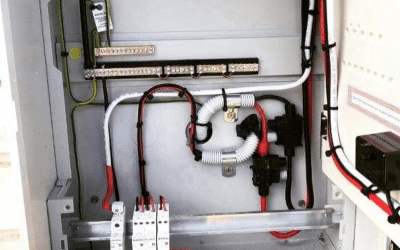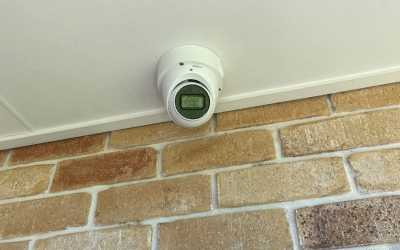As a resident of Brisbane, you rely on the electrical systems in your home to power your appliances, provide lighting, and keep your daily life running smoothly. However, have you ever wondered about the mysterious world of electrical units and how they play a crucial role in your home? If so, you’re in the right place!
In this article, we will delve into the importance of comprehending electrical units and how they impact your daily life. Whether you’re a homeowner, renter, or simply curious about the inner workings of your electrical systems, this comprehensive guide will equip you with the knowledge you need to make informed decisions about your home’s electrical setup.
Why is it important to understand electrical units in your home? Well, imagine a scenario where you encounter an electrical issue or wish to optimize your energy consumption. Without a basic understanding of electrical units, you may find yourself in the dark (literally!) and at a loss for how to troubleshoot or improve your electrical systems.
Throughout this blog post, we will explore common electrical units such as volts, amps, and watts, unravel the relationships between them, and shed light on their significance in your daily life. By the end, you’ll be equipped with the knowledge to understand your energy consumption, enhance safety measures, and make informed choices when it comes to electrical appliances and systems.
So, let’s embark on this enlightening journey together as we uncover the mysteries of electrical units and empower you to take control of your home’s electrical infrastructure. Get ready to say, “Watt’s up?” and gain a deeper understanding of the electrical systems that power your life in Brisbane.
Understanding Electricity Units: A Brief Overview
In this section, we will provide you with a concise yet informative overview of electrical units. Let’s dive into the fundamentals and answer some key questions that will set the stage for our exploration.
What are electricity units?
Electrical units are standardized measurements used to quantify and describe various aspects of electricity. These units provide a common language for understanding and communicating the characteristics and behavior of electrical systems. Just as we use meters to measure distance or seconds to measure time, electrical units allow us to quantify and compare the different properties of electricity.
There are several key electrical units that play essential roles in our understanding of electrical systems. These units include volts, amps, watts, and ohms, among others. Each unit represents a specific aspect of electricity and helps us grasp the concepts and principles underlying our home’s electrical infrastructure.
Why are electricity units important in everyday life?
You may be wondering why it is crucial to have a basic understanding of electrical units, especially in your everyday life as a resident of Brisbane. Well, here’s the deal: electrical units are the building blocks of understanding how electricity works, how much power your appliances consume, and how to ensure the safety and efficiency of your electrical systems.
By comprehending electrical units, you gain the ability to make informed decisions about your home’s electrical setup. Whether it’s determining the appropriate voltage for your devices, understanding the current flow in your circuits, or calculating the power consumption of your appliances, having a grasp of electrical units empowers you to navigate and troubleshoot your electrical systems effectively.
Furthermore, understanding electrical units enables you to identify potential electrical hazards, implement energy-efficient practices, and contribute to a sustainable and cost-effective lifestyle. By being knowledgeable about electrical units, you can make informed choices when it comes to selecting energy-efficient appliances, monitoring your energy consumption, and reducing your environmental footprint.
In the upcoming sections of this article, we will delve deeper into the specific electrical units, their definitions, and their significance in your everyday life as a resident of Brisbane. So, let’s continue this electrifying journey as we unravel the mysteries of volts, amps, watts, and more, and understand how these units shape and impact your home’s electrical systems.
Common Electricity Units in Your Home
Understanding the common electricity units used in your home is essential for comprehending how electricity works and how it affects your daily life. In this section, we will explore three fundamental units: volts, amperes, and watts. Let’s shed light on their definitions and roles within your home’s electrical systems.
Volt (V): The Voltage Unit
Voltage, measured in volts (V), is a crucial electrical unit that represents the electrical potential difference between two points in a circuit. It can be likened to the force or pressure that drives the flow of electrical current. Understanding voltage is vital because it directly affects the functionality and safety of your electrical appliances and devices.
Definition and explanation of voltage
Voltage can be defined as the energy per unit charge that an electric field transfers to a charged particle. In practical terms, it refers to the potential difference between two points in an electrical circuit. It is measured using a voltmeter.
To put it simply, voltage determines how strongly electric charges are pushed or pulled within a circuit. A higher voltage indicates a greater potential for current flow, while a lower voltage means less potential for current to move through the circuit.
Importance of voltage in electrical systems
Understanding voltage is crucial for a couple of reasons. Firstly, it helps ensure that your electrical appliances and devices operate within their designed voltage range. Using appliances with incorrect voltage can lead to malfunctions, damage, or even safety hazards.
Secondly, voltage plays a role in electrical safety. For instance, it influences the severity of electric shocks. Higher voltages are generally more dangerous, so understanding the voltage of electrical systems in your home is vital for practicing safety measures and preventing accidents.
Ampere (A): The Current Unit
The ampere, commonly referred to as an amp (A), is the unit used to measure electric current. Current refers to the flow of electric charges through a conductor, such as a wire. Understanding current is essential for comprehending how electricity moves within your home’s electrical circuits.
Definition and explanation of current
Current can be defined as the rate at which electric charges flow through a circuit. It is measured in amperes using an ammeter. Current flows when there is a potential difference (voltage) and a complete path for the charges to move.
Electric current can be either direct current (DC), where charges flow in one direction, or alternating current (AC), where charges constantly change direction. In most residential homes, AC is the standard type of current supplied by the power grid.
How current flows in electrical circuits
Electric current flows from a power source, such as a wall outlet, through the electrical wiring, and into the devices or appliances that are connected to the circuit. The amount of current flowing is influenced by factors such as the resistance in the circuit and the voltage supplied.
Understanding the current in your home’s electrical circuits helps you determine if the circuit can handle the load of the connected devices and ensures that the wiring and components are not overloaded, which can lead to overheating and potential fire hazards.
Watt (W): The Power Unit
Power, measured in watts (W), is the unit that quantifies the rate at which electrical energy is consumed, transferred, or transformed. It provides valuable insights into the energy requirements and efficiency of your electrical appliances and systems.
Definition and explanation of power
Power can be defined as the amount of energy consumed or transferred per unit time. It represents the rate at which work is done or energy is converted. In the context of electricity, power is calculated by multiplying the voltage (V) by the current (A) in a circuit.
Understanding power helps you assess the energy consumption of your appliances and make informed decisions regarding their usage. It also allows you to evaluate the efficiency of different devices and identify opportunities for energy conservation.
Calculating power consumption in your home
By knowing the power ratings of your appliances (usually indicated in watts on their labels or user manuals) and tracking their usage time, you can calculate the energy consumed. This information enables you to estimate your electricity costs and identify energy-intensive appliances that may contribute to higher bills.
In the next sections, we will explore the relationship between these electrical units, delve deeper into their calculations, and provide practical examples to help you better understand how volts, amperes, and watts interact within your home’s electrical systems.
The Relationship between Electrical Units
Understanding the relationship between electrical units is key to gaining a comprehensive understanding of your home’s electrical systems. In this section, we will explore two fundamental concepts: Ohm’s Law and the power formula. Let’s dive into the fascinating interplay between voltage, current, resistance, and power.
Ohm’s Law: Understanding Voltage, Current, and Resistance
Ohm’s Law is a fundamental principle in electrical engineering that helps us understand the relationship between voltage, current, and resistance in an electrical circuit. By grasping the concept of Ohm’s Law, you will gain valuable insights into how these variables are interconnected.
Definition and Explanation of Ohm’s Law
Ohm’s Law states that the current flowing through a conductor is directly proportional to the voltage across it and inversely proportional to the resistance of the conductor. Mathematically, Ohm’s Law can be expressed as I = V/R, where I represents current, V represents voltage, and R represents resistance.
In simpler terms, Ohm’s Law tells us that as the voltage increases, the current flowing through a circuit also increases, given that the resistance remains constant. Conversely, if the resistance increases, the current decreases for a given voltage.
Understanding Ohm’s Law is essential because it allows us to predict and control the behavior of electrical circuits. It serves as the foundation for troubleshooting electrical issues and designing efficient electrical systems.
Power Formula: Wattage Calculation
The power formula provides us with a method to calculate the electrical consumption of devices and determine their power requirements. It involves the relationship between voltage, current, and power.
Overview of the Power Formula
The power formula states that power (P) is equal to the product of voltage (V) and current (I). Mathematically, it can be expressed as P = V × I. The unit of power is the watt (W).
By applying the power formula, we can determine the power consumed by an electrical device or calculate the power delivered by an electrical source.
Using the Power Formula to Calculate Electrical Consumption
Knowing the power consumption of your electrical devices allows you to estimate their impact on your energy usage and make informed decisions about energy efficiency. To calculate the power consumption of a device, you multiply its operating voltage (V) by the current it draws (I) while in use.
For example, if you have a device that operates at 120 volts and draws 2 amperes of current, the power consumption would be 240 watts (P = 120V × 2A).
Understanding the power formula empowers you to assess the energy requirements of your appliances, evaluate their efficiency, and identify opportunities for energy conservation. It also helps you make informed decisions when selecting electrical devices that align with your energy consumption goals.
In the upcoming sections, we will explore practical examples that apply Ohm’s Law and the power formula, providing you with a deeper understanding of how voltage, current, resistance, and power interact within your home’s electrical systems. Get ready to unlock the secrets of these electrical relationships and gain a newfound appreciation for the role of electrical units in your everyday life!
Electrical Safety Measures
Ensuring the safety of your home’s electrical systems is of utmost importance. In this section, we will explore key electrical safety measures that every resident in Brisbane should be aware of. By understanding these measures, you can protect yourself, your loved ones, and your property from potential electrical hazards.
Understanding Electrical Load and Circuit Breakers
To maintain a safe and efficient electrical system, it’s crucial to understand electrical load and the role of circuit breakers in preventing electrical overloads.
Definition and Explanation of Electrical Load
Electrical load refers to the amount of power consumed by the electrical devices and appliances connected to a circuit. It is measured in watts and represents the demand placed on the electrical system.
By understanding your home’s electrical load, you can ensure that your electrical system is not overwhelmed by excessive power demands, which could lead to overheating, damaged equipment, or even electrical fires.
Role of Circuit Breakers in Preventing Electrical Overloads
Circuit breakers play a vital role in safeguarding your home’s electrical system from overloads and short circuits. They are designed to automatically interrupt the flow of electricity when a fault occurs, thereby protecting the circuit and preventing damage or hazardous situations.
When an electrical overload or short circuit occurs, the circuit breaker trips, cutting off the electrical supply to the affected circuit. This action helps prevent overheating, electrical fires, and damage to appliances or wiring.
It’s important to regularly check and maintain your circuit breakers to ensure they are in proper working condition. If you experience frequent tripping or suspect an issue with a specific circuit, it is advisable to consult a qualified electrician to investigate and address the problem.
Grounding and Earthing
Grounding, also known as earthing, is a critical safety measure that protects against electrical hazards and ensures the proper functioning of electrical systems.
Importance of Grounding and Earthing
Grounding provides a path for electrical currents to flow safely into the ground, directing them away from people and sensitive equipment. It helps prevent electric shocks, reduces the risk of electrical fires, and provides a stable reference point for voltage levels in electrical systems.
Proper grounding is particularly crucial in areas prone to lightning strikes or where electrical faults may occur. It helps divert the excessive electrical energy safely into the ground, minimizing the potential damage or danger caused by power surges.
How Grounding Protects against Electrical Hazards
When electrical faults or equipment malfunctions occur, grounding provides a low-resistance path for the electrical current to flow. This redirecting of the current helps trigger the circuit breaker, interrupting the flow of electricity and preventing dangerous situations.
To ensure effective grounding, it’s essential to have a proper grounding system installed in your home. This typically involves grounding rods, conductors, and a grounding electrode system that connects the electrical system to the earth.
Electrical Insulation
Electrical insulation plays a crucial role in protecting individuals from electric shocks and preventing short circuits within electrical systems.
Definition and Importance of Electrical Insulation
Electrical insulation refers to the materials and techniques used to prevent the flow of electrical current between conductive parts. It helps maintain the integrity of electrical circuits, prevents accidental contact with live wires, and minimizes the risk of electrical shock.
Proper electrical insulation is essential in various components of your home’s electrical system, including wiring, cables, outlets, and switches. Insulated materials, such as rubber, PVC, or fiberglass, are commonly used to encase conductive parts and create a barrier that prevents current leakage.
Types of Electrical Insulation Materials
There are various types of electrical insulation materials, each suited for specific applications. Common materials include:
Rubber: Known for its flexibility and resistance to moisture and chemicals, rubber is often used for insulation in cords and cables.
PVC (Polyvinyl Chloride): PVC is a widely used insulation material due to its affordability, durability, and resistance to heat and moisture.
Fiberglass: Fiberglass is a non-conductive material with excellent thermal and electrical insulation properties. It is commonly used in electrical panels and wiring applications.
By ensuring proper electrical insulation, you reduce the risk of electrical accidents and enhance the overall safety of your home’s electrical systems.
Energy Efficiency and Conservation
In today’s world, where sustainability and reducing our environmental impact are crucial, understanding energy efficiency and conservation is vital. In this section, we will explore the importance of energy-efficient appliances and practices that promote energy conservation within your home’s electrical systems.
Energy Efficiency in Electrical Appliances
Energy-efficient appliances are designed to consume less energy while delivering the same level of performance as their counterparts. Let’s dive into the significance of using energy-efficient appliances in your home.
Importance of Energy-Efficient Appliances
Energy-efficient appliances offer numerous benefits, both for your household and the environment. Here’s why they should be on your radar:
Lower Energy Bills: Energy-efficient appliances consume less electricity, resulting in significant savings on your energy bills over time.
Environmental Impact: By using less energy, energy-efficient appliances help reduce greenhouse gas emissions and contribute to a greener, more sustainable future.
Enhanced Performance: Energy-efficient appliances are often equipped with advanced technologies that improve performance, ensuring optimal functionality and convenience.
Long-Term Savings: Although energy-efficient appliances may have a higher upfront cost, the long-term savings on energy bills often outweigh the initial investment.
Tips for Choosing and Using Energy-Efficient Appliances
When selecting and utilizing energy-efficient appliances, consider the following tips:
Look for Energy Star Labels: Energy Star is an internationally recognized symbol for energy efficiency. Look for appliances with the Energy Star label, indicating they meet strict energy efficiency standards.
Compare Energy Ratings: Check the energy rating labels on appliances, such as the Energy Efficiency Rating (EER) for air conditioners or the Energy Rating Label for refrigerators. Opt for higher-rated models to maximize energy efficiency.
Optimize Appliance Settings: Utilize energy-saving features on appliances, such as eco-mode or sleep mode. Adjust temperature settings, use timers, and turn off appliances when not in use to minimize energy consumption.
Consider Size and Capacity: Choose appliances that suit your needs without being excessively large. Oversized appliances may consume more energy than necessary.
Energy Conservation Practices
In addition to using energy-efficient appliances, adopting energy conservation practices in your daily life can significantly reduce your energy consumption and environmental footprint.
Simple Steps to Conserve Energy at Home
Here are some simple yet effective energy conservation practices to implement in your home:
Lighting: Switch to energy-efficient LED light bulbs, turn off lights when not in use, and utilize natural daylight whenever possible.
Heating and Cooling: Properly insulate your home to minimize heat loss in winter and heat gain in summer. Set thermostats at optimal temperatures and consider using programmable thermostats for efficient temperature control.
Water Heating: Insulate your water heater and set the temperature to an energy-efficient level (around 120°F or 49°C). Use cold water for laundry whenever possible and take shorter showers to reduce hot water consumption.
Phantom Power: Unplug electronics and appliances when not in use or use power strips with switches to cut off standby power.
Benefits of Energy Conservation
Energy conservation brings a range of benefits, including:
Cost Savings: By reducing your energy consumption, you can significantly lower your utility bills and save money in the long run.
Environmental Impact: Conserving energy helps reduce greenhouse gas emissions and minimizes the demand for fossil fuels, leading to a healthier environment.
Resource Conservation: Energy conservation contributes to the preservation of natural resources, such as coal, gas, and oil, which are used to generate electricity.
By incorporating energy-efficient appliances and conservation practices into your daily life, you can make a meaningful impact on both your wallet and the planet.
In the following sections, we will explore advanced tools and techniques for monitoring and managing your electrical consumption, allowing you to further optimize your energy usage and embrace a more sustainable lifestyle. Stay tuned for valuable insights on energy monitoring and management!
Monitoring and Managing Your Electrical Consumption
Keeping a close eye on your electrical consumption is a valuable practice for optimizing energy usage and ensuring efficiency. In this section, we will explore two essential aspects of monitoring and managing your electrical consumption: smart meters and energy consumption tracking tools and apps.
Smart Meters and Energy Monitoring
Smart meters and energy monitoring systems provide valuable insights into your electricity usage, allowing you to track and manage your consumption more effectively.
Introduction to Smart Meters
Smart meters are advanced devices that measure and record your electricity usage in real-time. Unlike traditional meters, smart meters provide detailed information about your energy consumption, including usage patterns, peak hours, and even specific appliance consumption.
Smart meters communicate this data to your energy provider remotely, eliminating the need for manual meter readings. They enable you to access accurate and up-to-date information about your electricity usage, promoting better energy management.
Benefits of Energy Monitoring for Better Consumption Management
Energy monitoring offers several benefits for residents in Brisbane, including:
Real-Time Insights: With energy monitoring, you can track your electricity usage in real-time, empowering you to make informed decisions about your energy consumption habits.
Identify Energy-Intensive Appliances: Energy monitoring systems provide data on the energy usage of individual appliances. By identifying energy hogs, you can adjust your habits or consider upgrading to more energy-efficient alternatives.
Set Consumption Goals: Monitoring your energy usage allows you to set consumption goals and track your progress. It provides a tangible way to measure your efforts in reducing energy consumption and achieving a more sustainable lifestyle.
Budget Planning: Accurate energy monitoring data enables you to anticipate your energy costs more accurately, helping you plan and budget for your monthly expenses.
Energy Consumption Tracking Tools and Apps
In addition to smart meters, various energy consumption tracking tools and mobile apps are available to help you monitor and reduce your energy usage.
Overview of Energy Tracking Tools and Apps
Energy tracking tools and apps offer convenient ways to keep tabs on your electricity consumption. They typically provide features such as real-time usage data, historical consumption trends, and personalized recommendations for energy conservation.
These tools can be used to monitor individual appliances, track overall usage patterns, and compare your energy consumption to similar households. Some apps even allow you to set energy-saving goals and receive notifications when you exceed your targets.
How These Tools Can Help You Monitor and Reduce Energy Usage
Energy tracking tools and apps empower you to take control of your energy consumption in the following ways:
Awareness: By providing real-time and historical energy usage data, these tools raise awareness of your electricity consumption habits. This awareness prompts you to make conscious choices and identify areas where energy conservation is possible.
Behavioral Changes: Energy tracking tools and apps offer personalized recommendations based on your usage patterns. These suggestions help you make informed decisions about energy-saving practices and encourage positive behavioral changes.
Efficiency Improvements: With detailed insights into your energy usage, you can identify inefficiencies, such as appliances consuming more energy than expected or energy leaks in your home. This knowledge enables you to take corrective measures and improve overall efficiency.
Goal Setting and Motivation: Energy tracking tools allow you to set goals and track your progress towards reducing energy consumption. This gamification aspect can serve as motivation to adopt energy-saving habits and sustain them over time.
By utilizing smart meters, energy tracking tools, and apps, you can actively monitor your electrical consumption, make informed decisions about energy usage, and work towards reducing your environmental impact.
Summary
Understanding electrical units, such as volts, amps, and watts, is vital because it empowers you to make informed decisions about your home’s electrical setup. By comprehending these units, you gain the ability to troubleshoot electrical issues, optimize energy consumption, and ensure the safety and efficiency of your electrical systems.
We explored the relationship between electrical units, such as Ohm’s Law, which helps us understand the interplay between voltage, current, and resistance. By grasping this principle, you can predict and control the behavior of electrical circuits, ensuring their proper functioning.
Furthermore, we discussed the power formula, which allows us to calculate power consumption in watts. By understanding the power formula, you can assess the energy requirements of your appliances, estimate your electricity costs, and identify energy-intensive devices that may contribute to higher bills.
Moving on, we highlighted the significance of electrical safety measures in your home. From understanding electrical load and the role of circuit breakers in preventing overloads to the importance of grounding and earthing, implementing these safety measures ensures the protection of your loved ones and property from potential electrical hazards.
We then delved into energy efficiency and conservation, emphasizing the importance of using energy-efficient appliances and adopting energy conservation practices. Energy-efficient appliances not only reduce your energy bills but also contribute to a greener future by minimizing environmental impact. By practicing energy conservation, such as optimizing lighting, heating, and water heating, you can further reduce your energy consumption and make a positive difference.
Finally, we discussed the benefits of monitoring and managing your electrical consumption. Smart meters and energy tracking tools provide real-time insights into your energy usage, allowing you to track your consumption, identify energy-intensive appliances, and set consumption goals. By actively monitoring and managing your electrical consumption, you can make informed decisions, reduce energy waste, and contribute to a more sustainable lifestyle.
As residents in Brisbane, understanding the role of electrical units in your home is essential for a safe, efficient, and environmentally friendly living environment. By implementing energy-efficient practices, monitoring your electrical consumption, and making conscious choices, you can contribute to a greener future for yourself and the community.
So, what’s up with electrical units in your home? Armed with knowledge, you are now empowered to take control of your electrical systems, optimize energy usage, and pave the way for a more sustainable and energy-efficient lifestyle.







